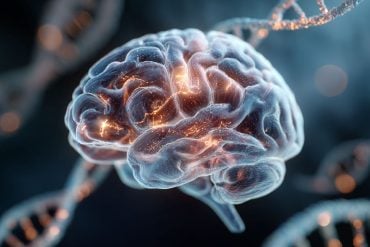Summary: A new study reveals that while the molecular structure of liver metabolism remains intact during starvation, obesity disrupts the precise timing of metabolic responses. In healthy mice, key “hub” molecules like ATP and AMP responded rapidly and in a coordinated sequence to starvation.
In obese mice, this temporal coordination was lost, even though the molecular network appeared structurally sound. This breakthrough highlights the importance of timing in metabolic regulation and introduces a new method for analyzing biological networks over time.
Key Facts:
- Temporal Breakdown: Obese mice show disrupted timing, not structure, in liver metabolism during starvation.
- Hub Molecule Shift: Healthy livers used ATP/AMP as core regulators; obese livers did not.
- New Method: Combines structural and temporal data for deeper insight into metabolism.
Source: University of Tokyo
Researchers led by Keigo Morita and Shinya Kuroda of the University of Tokyo have revealed a temporal disruption in the metabolism of obese mice when adapting to starvation despite no significant structural disruptions in the molecular network.
This is a breakthrough discovery as research including the temporal dimension in biology has been notoriously laborious and extracting systematic insight from big data has been difficult.

Thus, this study paves the way for further research into more general metabolic processes, such as food intake and disease progression.
The findings were published in the journal Science Signaling.
Living beings need to continuously extract energy from “food” and distribute it within the body to stay alive, that is keep their metabolisms running so that their bodies are in an optimal range called “homeostatis.”
Starvation is one of the most severe disruptions to this system. When adapting to starvation, the liver, which plays a central role in metabolism, coordinates not just which but also when molecules need to take action.
“Molecules inside cells form a large network,” says Kuroda, the principal investigator, “containing a small number of molecules regulating many metabolic reactions called hub molecules.
“However, a systematic understanding of the temporal coordination of molecules in the liver had been elusive due to the lack of comprehensive time-series data during starvation.”
The researchers set out to fill the gap by comparing the livers of healthy and obese mice. Their measures showed a clear difference between the hub molecules of healthy and obese liver cells. The former contained the energy-related molecules ATP and AMP, but the latter did not.
Such a clear difference between hub molecules could have structurally disrupted the molecular network. However, the researchers did not find such disruptions, so they investigated the temporal dimension.
“We comprehensively measured the time courses of various molecules,” says Kuroda, “and found that hub molecules in healthy livers responded to starvation more rapidly than other molecules.
“This suggested a well-controlled temporal order of the molecular networks in healthy livers during starvation. On the other hand, this coordination disappeared in the liver of obese mice.”
In other words, even though the structure of the molecular network during starvation remained robust, it became temporally vulnerable to obesity.
The method that led to this discovery, combining structural and temporal analysis of the intracellular molecular network, can be applied to other studies that include data sets from multiple “omes” such as the genome or the microbiome, opening avenues for further research. Kuroda describes their next project.
“Our approach successfully described the global landscape of adaptation to starvation, a complicated biological phenomenon. We would like to generalize our insights of the metabolic network during starvation to the metabolic network during food intake or disease progression.”
About this metabolism and obesity research news
Author: Emese Berta
Source: University of Tokyo
Contact: Emese Berta – University of Tokyo
Image: The image is credited to Neuroscience News
Original Research: Closed access.
“Structural robustness and temporal vulnerability of the starvation-responsive metabolic network in healthy and obese mouse liver” by Keigo Morita et al. Science Signaling
Abstract
Structural robustness and temporal vulnerability of the starvation-responsive metabolic network in healthy and obese mouse liver
Adaptation to starvation is a multimolecular and temporally ordered process. We sought to elucidate how the healthy liver regulates various molecules in a temporally ordered manner during starvation and how obesity disrupts this process.
We used multiomic data collected from the plasma and livers of wild-type and leptin-deficient obese (ob/ob) mice at multiple time points during starvation to construct a starvation-responsive metabolic network that included responsive molecules and their regulatory relationships.
Analysis of the network structure showed that in wild-type mice, the key molecules for energy homeostasis, ATP and AMP, acted as hub molecules to regulate various metabolic reactions in the network. Although neither ATP nor AMP was responsive to starvation in ob/ob mice, the structural properties of the network were maintained.
In wild-type mice, the molecules in the network were temporally ordered through metabolic processes coordinated by hub molecules, including ATP and AMP, and were positively or negatively coregulated. By contrast, both temporal order and coregulation were disrupted in ob/ob mice.
These results suggest that the metabolic network that responds to starvation was structurally robust but temporally disrupted by the obesity-associated loss of responsiveness of the hub molecules.
In addition, we propose how obesity alters the response to intermittent fasting.






